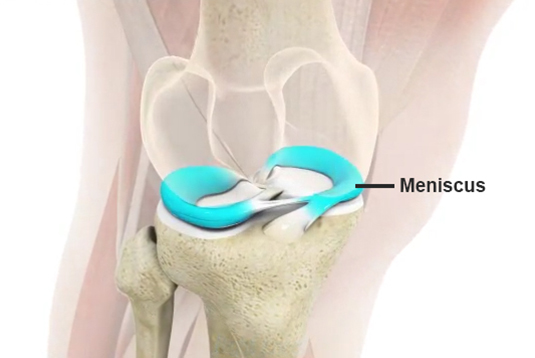
Knee injuries, particularly meniscus tears, are common among people of all ages, from athletes to the elderly. However, along with the physical pain and limitations, individuals often carry internal beliefs about these injuries that can hinder their recovery process.
In this article, we'll explore common false beliefs surrounding knee meniscus tears and shed light on what the meniscus is, along with effective ways to address and overcome these misconceptions.
Understanding the Meniscus
Before diving into the myths, it's essential to understand the role of the meniscus.
The meniscus is a C-shaped cartilage structure located in the knee joint, acting as a cushion between the thighbone (femur) and the shinbone (tibia). It helps distribute weight evenly across the joint, absorb shock, and stabilize the knee during movement.
Myth #1: Self-Blame
Many individuals with knee meniscus tears may unfairly blame themselves for the injury, assuming it was due to their actions or negligence. However, meniscus tears can occur due to various factors, including sudden twists, repetitive movements, or degenerative changes over time. It's essential to understand that these injuries are often unavoidable and not solely the result of personal actions.
Myth #2: Catastrophizing
Catastrophizing involves magnifying the severity of the injury and expecting the worst possible outcomes. While knee meniscus tears can be painful and temporarily limit mobility, they rarely lead to permanent disability, especially with proper treatment and rehabilitation. It's crucial to address these exaggerated beliefs to prevent unnecessary anxiety and stress during the recovery process.
Myth #3: Helplessness
Feeling helpless and believing that nothing can be done to improve the condition is another common misconception among individuals with knee meniscus tears. However, there are various treatment options available, ranging from conservative approaches like rest, physical therapy, and bracing to surgical interventions when necessary. Seeking appropriate medical guidance and actively participating in treatment can empower individuals to take control of their recovery journey.
Myth #4: Misunderstanding the Injury
Some individuals may misunderstand knee meniscus tears, assuming that surgery is always required or that it's the only solution. While surgery may be necessary in certain cases, not all meniscus tears require surgical intervention. Non-surgical treatments, such as activity modification, strengthening exercises, and anti-inflammatory medications, can often effectively manage symptoms and promote healing.
Myth #5: Fear of Movement
Fear of movement, or kinesiophobia, is a common barrier to recovery among individuals with knee injuries. Avoiding physical activity or movement due to fear of exacerbating the injury can lead to muscle weakness, stiffness, and reduced joint mobility. It's essential to work with healthcare professionals to develop a tailored rehabilitation program that gradually reintroduces movement and activity in a safe and controlled manner.
Myth #6: Expecting Immediate Recovery
Lastly, expecting immediate recovery from a knee meniscus tear is unrealistic and can set individuals up for disappointment and frustration. Healing takes time, and rehabilitation efforts may require patience and persistence. By setting realistic expectations and staying committed to the recovery process, individuals can achieve meaningful improvements in their knee function and overall quality of life.
Knee meniscus tears can be physically and emotionally challenging, but understanding the injury and addressing false beliefs are crucial steps toward recovery.
By debunking myths and embracing a comprehensive approach to treatment and rehabilitation, individuals can regain confidence in their bodies and optimize their recovery outcomes.
If you're experiencing knee pain or suspect a meniscus tear, book and appointment to see Dr. Javier Rios MD, for an accurate diagnosis and personalized treatment plan.











